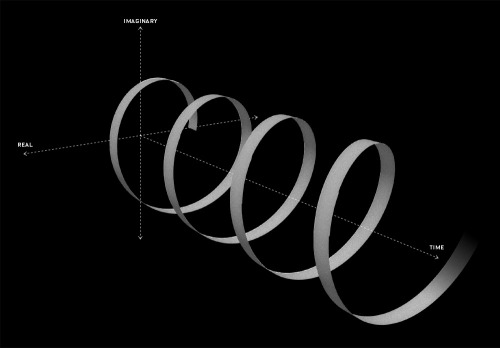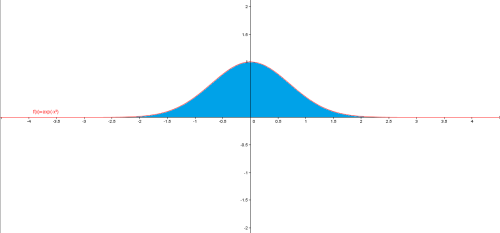The Height Of My Bun
The height of my bun
is inversely proportional to the number of shits I give that day.
I.e. Top of head bun = 0 shits while neat bun at back of head = lots of shits.
More Posts from Vanderwaalrus and Others





Wave Function
A wave function in quantum mechanics describes the quantum state of an isolated system of one or more particles. There is one wave function containing all the information about the entire system, not a separate wave function for each particle in the system. Its interpretation is that of a probability amplitude. Quantities associated with measurements, such as the average momentum of a particle, can be derived from the wave function. It is a central entity in quantum mechanics and is important in all modern theories, like quantum field theory incorporating quantum mechanics, while its interpretation may differ. The most common symbols for a wave function are the Greek letters ψ or Ψ
The image above shows the comparison of classical and quantum harmonic oscillator conceptions for a single spinless particle. The two processes differ greatly. The classical process (A–B) is represented as the motion of a particle along a trajectory. The quantum process (C–H) has no such trajectory. Rather, it is represented as a wave. Panels (C–F) show four different standing wave solutions of the Schrödinger equation. Panels (G–H) further show two different wave functions that are solutions of the Schrödinger equation but not standing waves.

Light behaves both as a particle and as a wave. Since the days of Einstein, scientists have been trying to directly observe both of these aspects of light at the same time. Now, scientists at EPFL have succeeded in capturing the first-ever snapshot of this dual behavior.
Read More - http://www.rdmag.com/videos/2015/03/first-ever-photograph-light-both-particle-and-wave


Euler’s Identity: eiπ + 1 = 0. Euler’s Identity is an Equation about constants π and e. Both are “Transcendental” quantities; in decimal form, their digits unspool into Infinity. And both are ubiquitous in scientific laws. But they seem to come from different realms: π (3.14159 …) governs the perfect Symmetry and closure of the Circle; it’s in Planetary Orbits, the endless up and down of light waves. e (2.71828 …) is the foundation of exponential growth, that accelerating trajectory of escape inherent to compound interest, nuclear fission, Moore’s law. It’s used to model everything that grows. What Euler showed is that π and e are deeply related, connected in a dimension perpendicular to the world of real things - a place measured in units of i, the square root of -1, which of course doesn’t … exist. Mathematicians call it an imaginary number. These diagrams are visual metaphors. Imagine a graph with real numbers on the horizontal axis and imaginary ones on the vertical. Exponential function, f(x) = ex, ordinarily it graphs as an upward swooping curve - the very paradigm of progress. But put i in there, Euler showed, and eix instead traces a circle around the origin - an endless wheel of Samsara intercepting Reality at –1 and +1. Add another axis for Time and it’s a helix winding into the Future; viewed from the side, that helix is an oscillating sine wave.The rest is easy: Take that function f(x) = eix, set x = π, and you get eiπ = -1. Rearrange terms and you have the famous identity: eiπ + 1 = 0. That’s the essence of Euler’s alchemy: By venturing off the real number line into this empyrean dimension, he showed that disruptive, exponential change (the land of e) reduces to infinite repetition (π). These diagrams combine the five most fundamental numbers in math - 0, 1, e, i, and π - in a relation of irreducible simplicity. e and π are infinitely long decimals with seemingly nothing in common, et they fit together perfectly - not to a few places, or a hundred, or a million, but all the way to forever.
You can take this farther, too. If you write that function above in a more general but still simple form as f(x) = e(zx), where z = (a + bi), what you get is no longer a circle but a logarithmic spiral, combining rotation and growth - now both at the same time- These graceful spirals are also found everywhere in Nature, from the whorls in a nautilus shell to the sweeping arms of Galaxies. And they’re related, in turn, to the Golden Ratio (yet another infinite decimal, 1.61803 …) and the Fibonacci Sequence of Numbers (0, 1, 1, 2, 3, 5, 8, 13, 21, 34, 55, 89, …). But the weirdest thing about Euler’s formula - given that it relies on imaginary numbers - is that it’s so immensely useful in the real world. By translating one type of motion into another, it lets engineers convert messy trig problems into more tractable algebra - like a wormhole between separate branches of math. It’s the secret sauce in Fourier transforms used to digitize music, and it tames all manner of wavy things in quantum mechanics, electronics, and signal processing; without it, computers would not exist.
<3


The Gaussian Integral is a beautiful integral for which the area between the e^(-x^2) and the x-axis from negative infinity to positive infinity perfectly equals the square root of pi. Image sources: 1, 2.









A Harry Potter themed comic from Existential Comics, exhibiting Russell’s paradox in logic and set theory.

http://smbc-comics.com/comic/rocks
I really just want someone who’s in the same shoes as me to tell me it’s okay. I mean. All my friends are smart and yeah, they say stuff like “you’re not dumb!!” But im just thinking “well im not smart either”
-
 nursejenb liked this · 9 years ago
nursejenb liked this · 9 years ago -
 whatadaytovisitseattle liked this · 9 years ago
whatadaytovisitseattle liked this · 9 years ago -
 red-grn-blu-blog liked this · 9 years ago
red-grn-blu-blog liked this · 9 years ago -
 dafne0307-blog liked this · 9 years ago
dafne0307-blog liked this · 9 years ago -
 jordyns-studyblr liked this · 9 years ago
jordyns-studyblr liked this · 9 years ago -
 auneur reblogged this · 9 years ago
auneur reblogged this · 9 years ago -
 finite--incantatum reblogged this · 10 years ago
finite--incantatum reblogged this · 10 years ago -
 finite--incantatum liked this · 10 years ago
finite--incantatum liked this · 10 years ago -
 r-ho-mantic reblogged this · 10 years ago
r-ho-mantic reblogged this · 10 years ago -
 llamacadet reblogged this · 10 years ago
llamacadet reblogged this · 10 years ago -
 inomniaparatus20 reblogged this · 10 years ago
inomniaparatus20 reblogged this · 10 years ago -
 tinylittlerambless reblogged this · 10 years ago
tinylittlerambless reblogged this · 10 years ago -
 dontlosefaithinmelove reblogged this · 10 years ago
dontlosefaithinmelove reblogged this · 10 years ago -
 ob-nurse-at-your-cervix reblogged this · 10 years ago
ob-nurse-at-your-cervix reblogged this · 10 years ago -
 infiniteedreeams reblogged this · 10 years ago
infiniteedreeams reblogged this · 10 years ago -
 hania-bxo-blog liked this · 10 years ago
hania-bxo-blog liked this · 10 years ago -
 hedgepuffgirl reblogged this · 10 years ago
hedgepuffgirl reblogged this · 10 years ago -
 hedgepuffgirl liked this · 10 years ago
hedgepuffgirl liked this · 10 years ago -
 malabellum liked this · 10 years ago
malabellum liked this · 10 years ago -
 eatsleepmedicinerepeat liked this · 10 years ago
eatsleepmedicinerepeat liked this · 10 years ago -
 premedand-sweettea reblogged this · 10 years ago
premedand-sweettea reblogged this · 10 years ago -
 1truebeyoncexx-blog liked this · 10 years ago
1truebeyoncexx-blog liked this · 10 years ago -
 cici100 reblogged this · 10 years ago
cici100 reblogged this · 10 years ago -
 shouldbestudyingmd liked this · 10 years ago
shouldbestudyingmd liked this · 10 years ago -
 fearlessroadtosomewhere reblogged this · 10 years ago
fearlessroadtosomewhere reblogged this · 10 years ago -
 coffeeandsoul liked this · 10 years ago
coffeeandsoul liked this · 10 years ago -
 greenlarryfairy liked this · 10 years ago
greenlarryfairy liked this · 10 years ago -
 renouvelled liked this · 10 years ago
renouvelled liked this · 10 years ago -
 northernprepster liked this · 10 years ago
northernprepster liked this · 10 years ago -
 duhyeanah reblogged this · 10 years ago
duhyeanah reblogged this · 10 years ago -
 cittypal reblogged this · 10 years ago
cittypal reblogged this · 10 years ago -
 princessofsquats reblogged this · 10 years ago
princessofsquats reblogged this · 10 years ago -
 princessofsquats liked this · 10 years ago
princessofsquats liked this · 10 years ago -
 waxxxxxxxxx reblogged this · 10 years ago
waxxxxxxxxx reblogged this · 10 years ago -
 waxxxxxxxxx liked this · 10 years ago
waxxxxxxxxx liked this · 10 years ago -
 pre-med-timelord reblogged this · 10 years ago
pre-med-timelord reblogged this · 10 years ago -
 pre-med-timelord liked this · 10 years ago
pre-med-timelord liked this · 10 years ago -
 luckystarsmd reblogged this · 10 years ago
luckystarsmd reblogged this · 10 years ago